Wall tricep extensions are a variation of the body tricep press that you can do virtually anywhere and without any equipment whatsoever.
Yet, despite their accessibility, wall tricep pushes are surprisingly effective for building muscle mass. In fact, you can make two modifications to increase the difficulty even more.
Moving your feet further back makes wall triceps extensions harder by increasing the percentage of your body weight that’s used as resistance.
Similarly, placing your hands lower down on the wall increases the range of motion at the elbow joint, which means that your triceps have to perform more work and tolerate extra time under tension.
Combining these modifications will really tax your triceps, especially when you perform high rep sets that are taken close to muscular failure.
Related: Triceps innervation
Wall tricep extension exercise details
- Also Known As: Wall tricep pushes
- Main Muscles: Triceps
- Exercise Type: Strength
- Exercise Mechanics: Isolation
- Difficulty Level: Beginner
- Equipment Needed: None
How to do wall tricep extensions
- Place your hands shoulder-width apart against a wall.
- Shuffle your feet back and tighten your abs and glutes.
- Lower your face to the wall in a controlled manner by bending your elbows.
- Keep going until your face almost touches the wall.
- Press into the wall with your hands and forearms to push yourself back up.
- Flex your triceps forcefully as you lock your elbows out.
- Perform 3-5 sets of 8-30 reps.
Wall tricep extension modifications
These simple-to-implement yet challenging-to-perform wall tricep push up modifications will help you to get a great workout regardless of your ability level.
Hand height
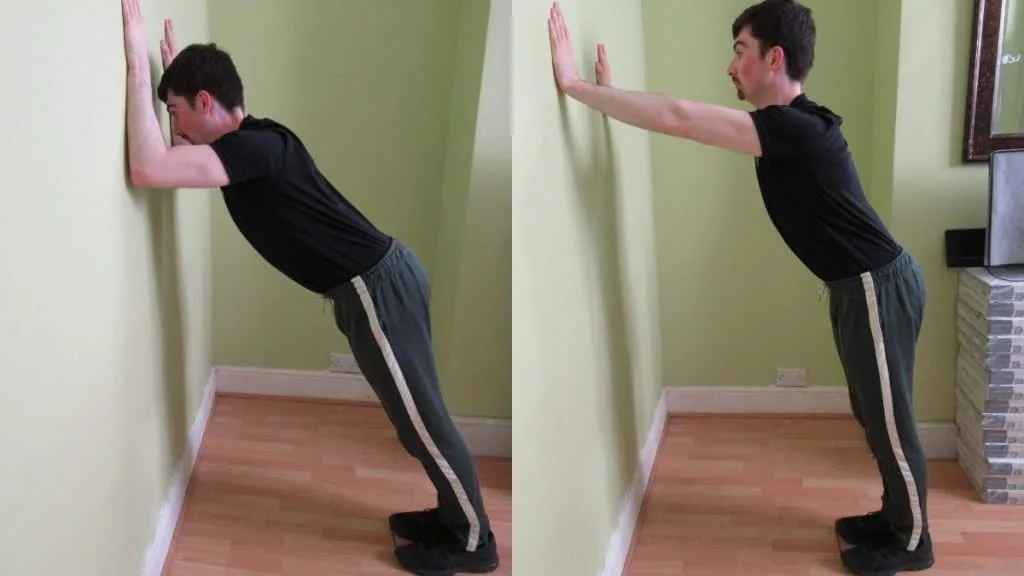
Most lifters know that you need to train the long head of the triceps in order to achieve optimal arm development (because it’s the single biggest muscle in your upper arm).
Yet, to work the long head optimally, you have to put your shoulders into flexion, which usually involves doing some kind of overhead movement with free weights or cables.
But you can mimic the optimal shoulder positioning with tricep wall push ups.
By moving your hands lower down and your feet further back, your shoulders will end up in a more flexed position (i.e., positioned more over your head), which in turn places a greater demand on the long head of your triceps.
Making this alternation means that you’re now hitting all three tricep heads in one movement. As such, you could make the wall tricep push your primary exercise.
Foot distance
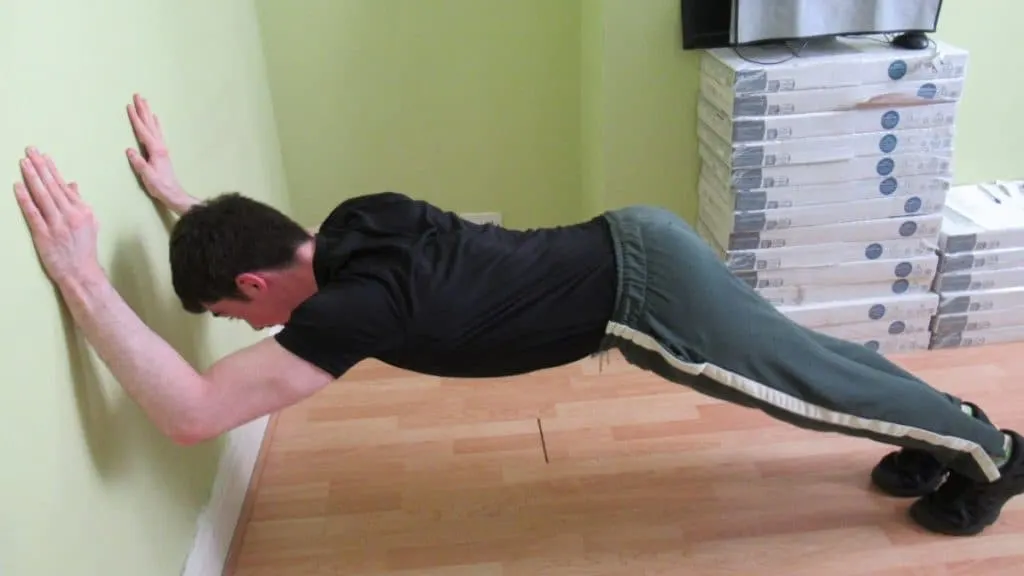
The further your feet are away from the wall, the higher the percentage of your body weight that’s used as resistance.
So if you’re really new to strength training, then it’s best to start off with your feet and body close to the wall, as this positioning will lower the resistance level.
As you get stronger, you can make the exercise harder by shuffling your feet backward and leaning more of your weight onto your hands.
Just make sure to use a good shoe (or go barefoot) for this exercise. If you try to move your feet back and balance on your toes while wearing socks, then you might slip and fall, which could result in an unpleasant injury.
This is also why you shouldn’t do wall tricep extensions with your feet on an exercise mat—the mat could slip and cause you to fall or bang your head against the wall.
Training intensity
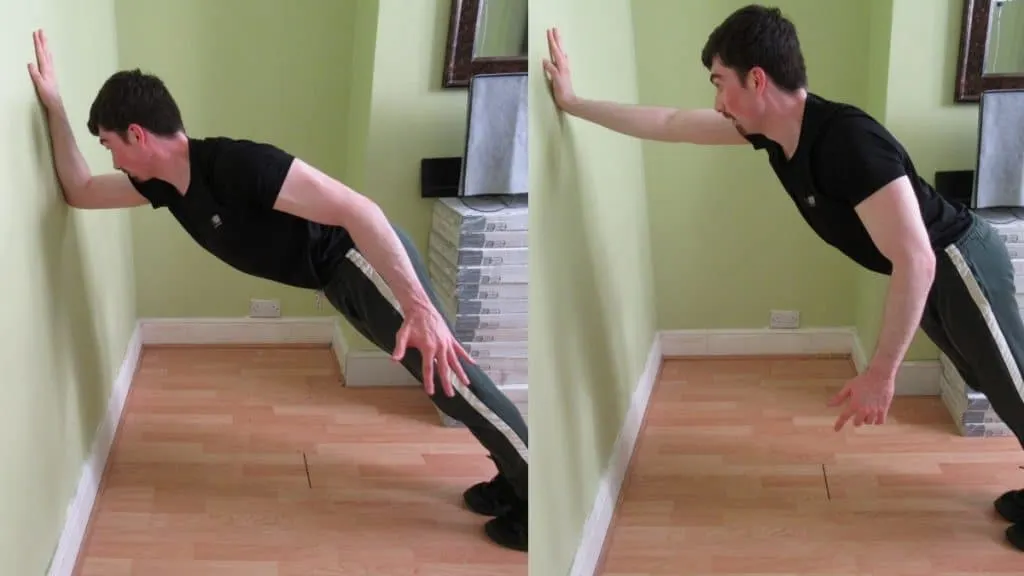
Many bodybuilding enthusiasts struggle with high rep training because it places more demand on their cardiovascular system than low rep lifting does.
But if you want to pump up your triceps, preserve your arm size, and even stimulate new muscle growth, then you need to train close to failure because the first reps in a high rep set aren’t really effective for stimulating hypertrophy.
You need to train within close proximity to muscular failure in order to recruit all of the motor units. The all-important fast-twitch fibers have no incentive to produce maximum force unless they’re called upon. And for that to happen, you need to train intensely.
You can also try the plank to tricep extension if you want to do another equipment-free exercise, but once which offers more resistance out of the box.
How effective are wall tricep pushes?
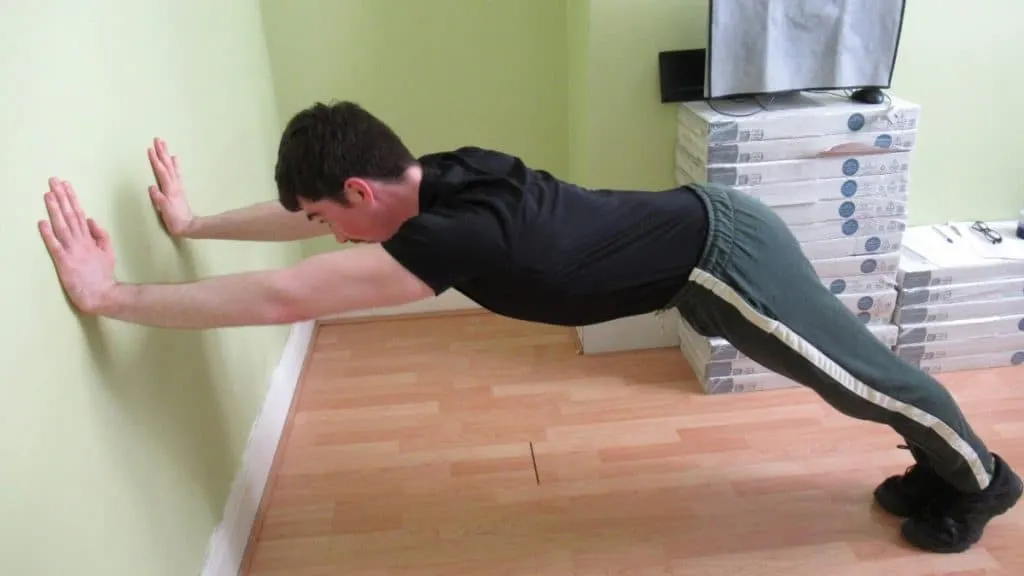
Against the wall tricep extensions are undeniably convenient. But wall tricep push ups are more than an exercise for maintaining your muscle mass when you can’t get to the gym; they can build new triceps size if you train hard enough.
For starters, you can place your hands lower down on the wall to increase your range of motion.
This modification puts your shoulders into flexion, which in turn activates the biggest head of the triceps, namely, the long head, which is the only triceps muscle capable of acting on the shoulder joint.
Therefore, when you do tricep wall push ups with a low hand position, you’re effectively doing ring tricep extensions as far as your muscles are concerned.
You can also slow down your reps to increase the time under tension, which, after all, is the primary muscle growth stimulus.
Taking everything into account, wall tricep pushes are a highly effective exercise that produces results in proportion to your effort and willingness to make some of the recommended positioning modifications.
Conclusion
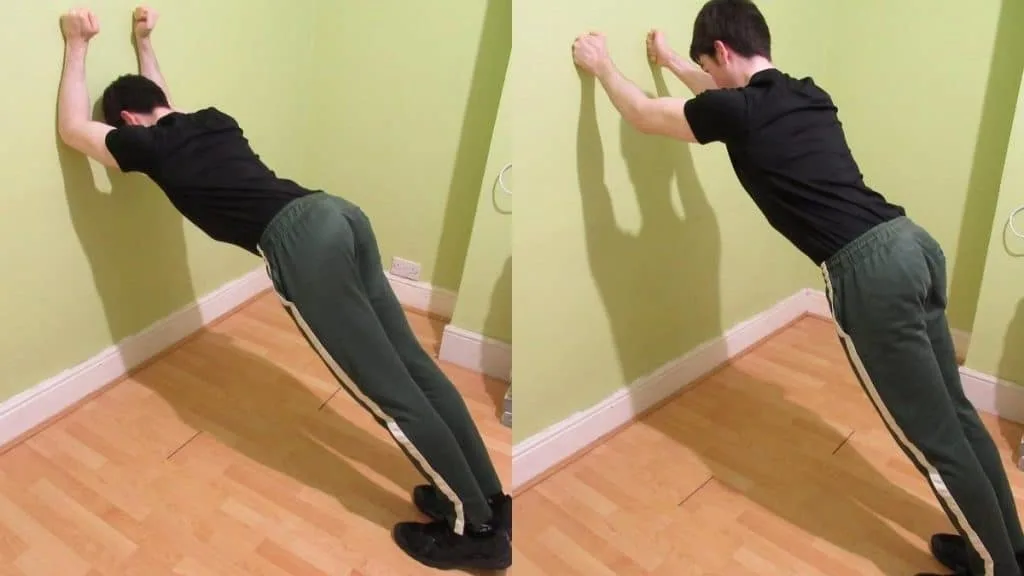
Lifting free weights is obviously a great way to build your triceps. But as simple pieces of meat, your triceps only respond to tension. So, in theory, you could maximize your development with nothing but wall tricep extensions.
After all, you can modify the movement by changing the height of your hands on the wall, the distance of your feet from the wall, the cadence of your reps, and your proximity to muscular failure.
Making all of these modifications will transform the wall triceps press into a seriously effective mass-builder. You could even wear a weighted vest if you’re really dedicated to the pursuit of gaining size. But for most lifters, their body weight will offer enough resistance for the recommended high rep training style.

